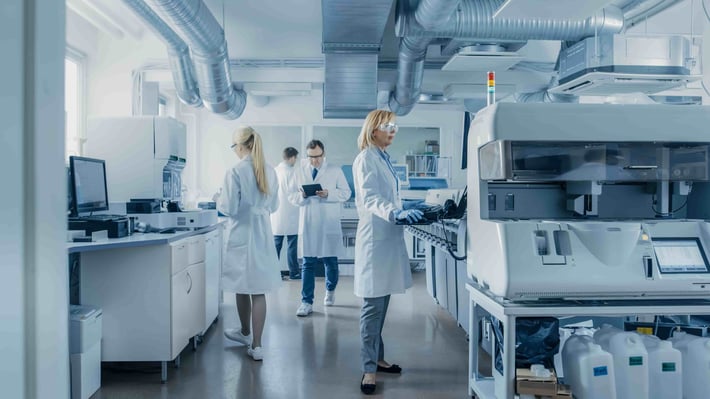
In the lab, as in life, there are events within your control, and events well outside of it. However, in the lab (but not necessarily always in life), external events can have an internal impact, especially concerning the internal air quality (IAQ) in a laboratory.
What's Your Internal Air Quality IQ?
A wildfire 50 miles away can impact IAQ even in the most secure and “air tight” labs. On a smaller scale, something as seemingly insignificant as an employee’s clothing can have an adverse impact on internal air quality.
The challenge is often simply air itself — how do you keep an eye on what you can’t see? How do you ensure that your IAQ conforms to external standards (e.g., compliance and regulatory) as well as internal workflows and business needs (e.g., ensuring samples and studies are untainted)? What SOPs do you have in place?
As with planning for disaster and measuring relative humidity, the solution to this challenge begins with awareness, and awareness begins with monitoring.
Controllable vs. Non-controllable events in IAQ
Before we dig too deeply into monitoring solutions to help ensure IAQ, let’s talk about the events that regularly impact IAQ. We’ve broken them into two categories: external events and internal events.
The bad news is external events will always be beyond your control. Air pollution from the outside world, weather conditions, the aforementioned wildfires (ask any biotech in San Diego, San Francisco, or ANYWHERE in California about air quality during fire season), even construction in a neighboring building can send particles flying into your lab.
The good news about external events is you can prepare for them, and “be aware of them.” For example, with proper ventilation and filtration technology, you can essentially prevent the outside from coming inside: high-efficiency particulate air (HEPA) filters can remove 99.9% of air pollutants. And with real-time monitoring hardware and software, you can be alerted to even the slightest dip in IAQ and respond accordingly (further protecting samples and specimens, etc.).
On the other hand/on the bright side, internal events that could impact IAQ are 100% within your control. The challenge is often simply knowing what they comprise, how to identify them, and creating a plan to address them.
The breadth and depth of what comprises these internal events is often surprising for most clinical lab managers. E.g., while a biotech lab concerned with contamination will take measures such as ensuring everyone entering a lab has a sterile lab coat, slippers, hair net, etc., it may not have SOPs in place for, say, perfume usage or jewelry. And IAQ is easily and immediately impacted by particles from perfume or bacteria in an earring or wedding band.
An additional internal factor that harms IAQ often comes from outside the lab, and from other departments more focused on budgets than scientific progress. Your operations department could determine that keeping the HVAC system running at top speed at night, on weekends, during certain seasons, simply costs too much, and have it dialed down or even shut-off. It’s not (or it’s not supposed to be) a malevolent action, but it can have disastrous consequences on your IAQ.
They say knowing is half the battle, and here’s where monitoring once more makes a huge difference. What your eyes and nose will miss, highly calibrated monitoring equipment will catch. You may quickly learn that the reason so many tests go south on Tuesdays is because that’s when Mark is there, slathered in Polo cologne, or Terry has decided to save a few bucks by adjusting HVAC systems after 5 pm.
Your monitoring system will report with time/date stamps, helping you connect IAQ patterns to internal actions, and empowering you with the data you need to make changes.
 Learn more about particle counting in our blog post, The Importance of Particle Counting in a Laboratory.
Learn more about particle counting in our blog post, The Importance of Particle Counting in a Laboratory.
Monitoring IAQ: It's a 24/7/365 Undertaking
While not all labs have the same IAQ standards, most have the same needs: SOPs to ensure air quality, SOPs to respond when air quality is impacted, and SOPs for tracking and reporting on air quality at all times.
With laboratory monitoring as a service, a lab can rest assured that its IAQ is under 24/7 supervision, 365 days a year. Most service providers will be able to provide a custom platform based on a lab’s unique compliance needs, its internal workflows, and the sensitivity of its projects and IP.
As importantly, a lab monitoring service provider will be able to provide reporting that’s integrated into a lab’s business and security systems, and can help automate response and contingency plans.
For more information on air quality, read our white paper:
